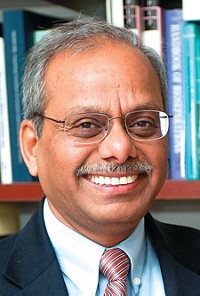Advertisement
Grab your lab coat. Let's get started
Welcome!
Welcome!
Create an account below to get 6 C&EN articles per month, receive newsletters and more - all free.
It seems this is your first time logging in online. Please enter the following information to continue.
As an ACS member you automatically get access to this site. All we need is few more details to create your reading experience.
Not you? Sign in with a different account.
Not you? Sign in with a different account.
ERROR 1
ERROR 1
ERROR 2
ERROR 2
ERROR 2
ERROR 2
ERROR 2
Password and Confirm password must match.
If you have an ACS member number, please enter it here so we can link this account to your membership. (optional)
ERROR 2
ACS values your privacy. By submitting your information, you are gaining access to C&EN and subscribing to our weekly newsletter. We use the information you provide to make your reading experience better, and we will never sell your data to third party members.
Materials
E. V. Murphree Award In Industrial & Engineering Chemistry: Michael Thackeray
by Linda Wang
January 4, 2016
| A version of this story appeared in
Volume 94, Issue 1
Sponsor: ExxonMobil Research & Engineering Co.
Citation: For life-long contributions to the scientific research, discovery, and technological development of lithium battery electrode materials.
Current position: Distinguished Fellow and senior scientist, Chemical Sciences & Engineering Division, Argonne National Laboratory
Education: B.Sc., M.Sc., Ph.D., chemistry, University of Cape Town, South Africa
Thackeray on what gets his creative juices flowing: “I am motivated by doing useful, creative science and driving technologies forward, particularly for the benefit of humanity. As a young scientist, during the first international oil crisis in the mid-1970s, when the price of oil and gasoline quadrupled, I was made aware of the need for advanced battery technologies to power electric vehicles to lessen the world’s dependence on fossil fuels. Today, the societal and economic urgency to find advanced batteries is even greater to help enable the reduction of CO2 emissions and global warming.”
What his colleagues say:“The adoption of Thackeray’s discoveries and innovations in battery materials have begun to impact society significantly. Not only are his lithium ion materials having a direct impact on the adoption of electric vehicles across the globe, but they are also impacting our ability to communicate with one another through use in personal portable electronics. They will ultimately help enable the adoption of wind and solar generation of electricity.”—Jeffrey P. Chamberlain, Argonne National Laboratory






Join the conversation
Contact the reporter
Submit a Letter to the Editor for publication
Engage with us on Twitter